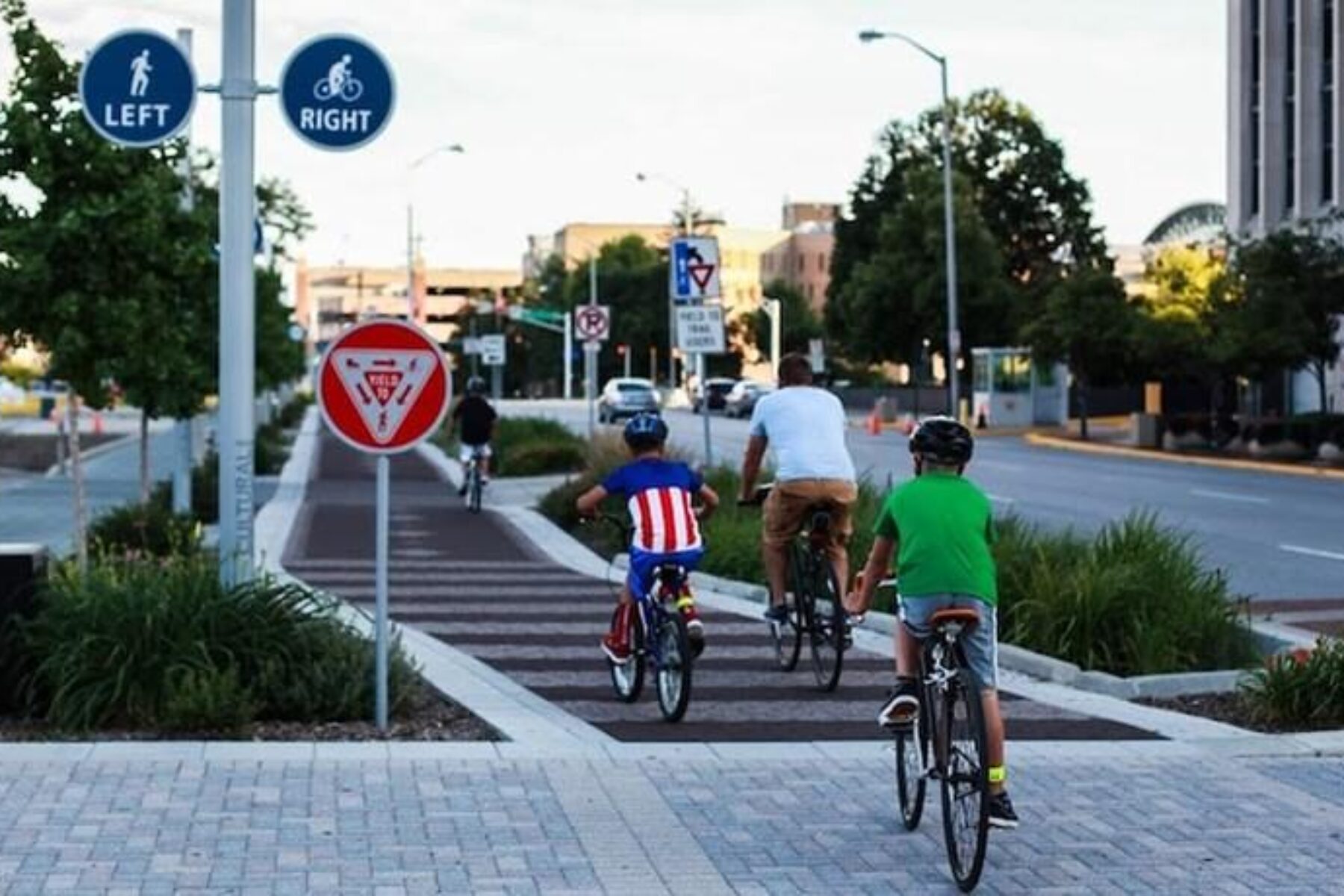Despite Earlier Fears, the State of State Trail Funding Looks Strong

In the early months of the COVID-19 pandemic, prospects for funding trails and active transportation for the foreseeable future seemed dim.
A number of high-dollar state policy initiatives that Rails-to-Trails Conservancy (RTC) had been supporting or tracking went up in smoke as state legislatures abruptly adjourned. A few funding packages that had been passed by state legislators—and were headed to the ballot for voter approval—were rescinded due to fiscal uncertainty during the ongoing public health crisis.
With tax revenue to state and local governments suddenly curtailed, and public health costs borne by those state and local governments surging, the prospect of public funds going toward trails and bike lanes seemed unlikely. Moreover, we prepared to “play defense” and watch for state legislatures raiding funds for trails to balance budgets or support other needs.
Not expecting new funding, we also focused on nonmonetary tactics to advance the trails cause.
However, two things have happened that have proved us wrong:
1. Interest in trails, biking and outdoor recreation surged during the pandemic (in addition, some essential workers worried about using public transit early in the pandemic took up active transportation modes as a way to get to their jobs) and continues to maintain at high levels. Trail use in the spring of 2020 peaked at 200% higher than during the same time in the previous year, and was up by more than 50% on average for the year 2020.
2. State budgets, in particular, have fared much better than feared. Federal emergency relief has been a significant part of that, but economic recovery numbers such as tax revenues have exceeded early projections in many states.
Where We Are Now—And Headed

As of the summer of 2021, the state of trails in the states is much stronger than we anticipated.
In the summer of 2020—RTC successfully fought an attempt by some Pennsylvania legislators to raid a state outdoor recreation fund that supports trails. Expected similar assaults elsewhere never materialized.
RTC has also supported successful initiatives in 2021 (a few states’ legislatures are still in session) that so far have generated more than $66 million in new, state-level funding for trails and active transportation—in Florida, Iowa, Ohio, Utah and Virginia. The most significant of these include Utah appropriating $35 million for active transportation—as well as additional outdoor recreation funds for which trails are eligible—and Virginia allocating more than $10 million to trails.
This doesn’t account for additional federal emergency funds (like the American Rescue Plan) that states have allocated for active transportation and trails, or funding for transit initiatives, including many walking and bicycling connections that voters around the country approved last November.

In addition, RTC has made strides in other states to help procure more funding in the future. For example, Indiana—which previously appropriated $90 million for its Next Level Trails program, designed to connect trail networks such as the Great American Rail-Trail™, has in one year seen its brand-new legislative trails caucus membership grow to 26% of all state legislators. This bipartisan group of state-elected officials successfully advocated for $60 million in American Rescue Plan dollars to be added to the Next Level Trails fund as well as to designate 2021 the Year of the Trails in the Hoosier State.
The future for trail funding looks bright—something that was quite the opposite just over a year ago. While it’s always best to prepare for the worst, we’re obviously elated that our analysis of limited funding for trails proved incorrect.
Although it’s unclear when the COVID-19 pandemic will subside, it appears that the surge in interest in outdoor recreation and active transportation is here to stay—demonstrating the importance of continued state and local investment in safe biking and walking infrastructure.

Donate
Everyone deserves access to safe ways to walk, bike, and be active outdoors.




